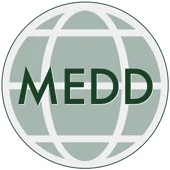Current State of Research on Gender Disparities in Medical Research
Gender disparities persist in medical research, with women frequently underrepresented in clinical trials and research agendas, despite bearing a disproportionate burden of certain diseases. Recent studies reveal systemic gaps in trial enrollment, funding priorities, and academic leadership, which perpetuate inequities in diagnostic and treatment outcomes. These disparities occur alongside emerging political challenges to gender-inclusive research, further threatening progress in addressing women’s health needs.
Detailed Analysis of Key Findings
1. Clinical Trial Participation Gaps
- Underrepresentation in Critical Disease Areas: Women comprise 41% of participants in cardiovascular and cancer trials, which mirrors disease burden. In psychiatry, only 42% of participants are female despite women making up 60% of patients with psychiatric disorders[^1^].
- Autoimmune and Mental Health Disparities: Rheumatoid arthritis, thyroid disorders, and PTSD disproportionately affect women, yet preclinical studies often exclude females, hindering effective treatment development[^1^].
- Obstetrics Research Deficit: Obstetric complications affect 33% of women globally, but represent only 2% of U.S. clinical trials, leaving critical knowledge gaps in maternal health[^1^].
2. Disease-Specific Research Gaps
| Disease Area | Disparity Example | Source |
|---|---|---|
| Autoimmune Diseases | Insufficient focus on immune function differences impacting women’s treatment | [1] |
| PTSD | Preclinical studies often exclude females despite higher incidence | [1] |
| Obstetrics | Trials inadequately address high-risk conditions like eclampsia | [1] |
3. Funding and Structural Barriers
- Inequitable Resource Allocation: Research on conditions like migraine, endometriosis, and anxiety disorders is underfunded relative to their societal impact. For example, while women are more affected by these conditions, funding priorities often favour diseases with higher male prevalence[^1^][^3^].
- Policy Threats: Recent restrictions on using terms like “diversity” and “women” in federal grant proposals risk stalling progress on LGBTQ+ health and reproductive medicine research[^3^].
4. Editorial and Leadership Disparities
- Gender Imbalance in Journal Leadership: Women hold only 14% of editorial board positions and 8% of editor-in-chief roles in medical journals, despite authoring 26% of research. This perpetuates biases in peer review and publication priorities[^5^].
- Impact on Research Quality: Male-dominated editorial boards may favour studies excluding sex differences, reinforcing gaps in women’s health literature[^5^].
Key Learning Objectives for Physicians
- Identify Systemic Gaps: Recognise underrepresentation of women in clinical trials and sex-specific research priorities.
- Assess Structural Barriers: Understand how funding inequities and editorial biases delay advancements in women’s health.
- Advocate for Equitable Research: Apply awareness of these disparities to advocate for gender-inclusive study designs and policies.
References
- Does the Gender Gap in Medical Research Still Exist? (TIME, 2024-11-01). Link: [URL]
- What Happens to Health Research When ‘Women’ and ‘Diversity’ Are Banned Words (PBS, 2025-03-27). Link: [URL]
- The Hidden Bias in Medical Research: Gender Inequality in Those Producing the Content (AMWA, 2025-02-27). Link: [URL]
This structured overview provides actionable insights for clinicians to address gender disparities in research and clinical practice.
Recommend0 recommendationsPublished in Uncategorized





